Crystal red shrimp can survive in hard water, but they prefer soft, slightly acidic water for optimal health and breeding. Hard water can lead to stress, health issues, and reduced reproduction rates.
water, but they prefer soft, slightly acidic water for optimal health and breeding. Hard water can lead to stress, health issues, and reduced reproduction rates.
The Importance of Water Parameters for Crystal Red Shrimp
Crystal red shrimp, known scientifically as Caridina cantonensis, are highly sought after in the aquarium hobby for their vibrant coloration and unique appearance. These shrimp are sensitive to water parameters and require specific conditions for optimal health and breeding. While they can survive in hard water, they thrive in soft, slightly acidic environments. This article will discuss the ideal water parameters for crystal red shrimp and provide guidance on how to maintain these conditions in your aquarium .
.
Understanding Water Hardness and Its Effects on Crystal Red Shrimp
Water hardness refers to the concentration of dissolved minerals, primarily calcium and magnesium, in the water. It is typically measured in degrees of hardness (dGH) or parts per million (ppm). Hard water has a high mineral content, while soft water has a lower mineral content. The hardness of water in an aquarium can significantly impact the health and well-being of its inhabitants, including crystal red shrimp.
Crystal red shrimp are known to be sensitive to water parameters, and water hardness is no exception. While they can survive in hard water, they generally prefer soft water with a GH over 4. When exposed to hard water, these shrimp may experience stress, decreased activity levels, and potential health issues. In addition, hard water can hinder the shrimp’s ability to molt, which is a crucial process for growth and overall health.
Breeding is also affected by water hardness. Bee shrimp are more likely to breed successfully in soft, slightly acidic water. Hard water conditions can lead to reduced reproduction rates, as the shrimp may struggle to produce viable eggs or offspring.
To ensure the health and longevity of your crystal red shrimp, it is essential to monitor and maintain appropriate water hardness levels in your aquarium. Regular water testing, using water conditioners, and making necessary adjustments to water hardness can help create a more suitable environment for these delicate creatures.
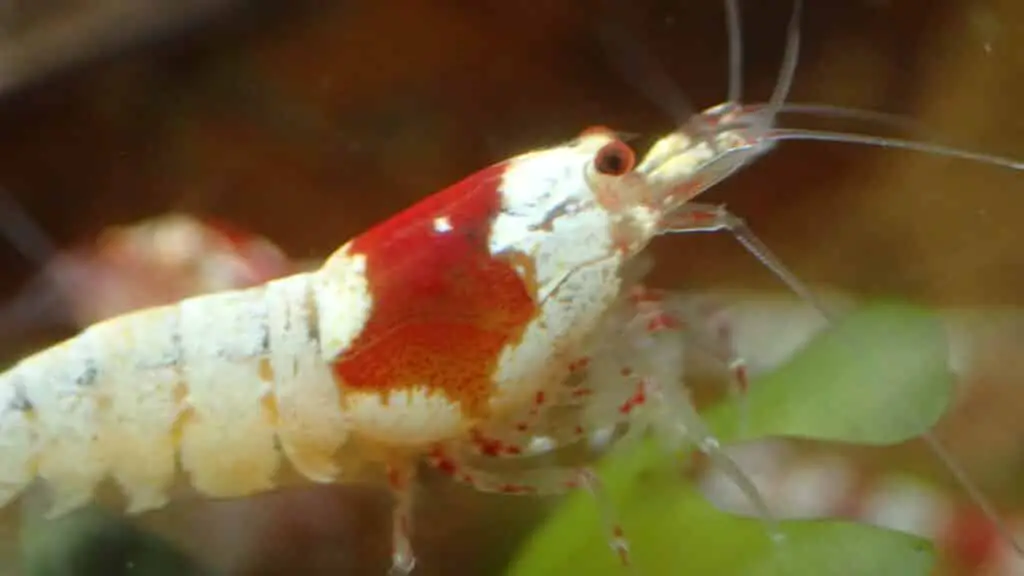
Ideal Water Parameters for Keeping Crystal Red Shrimp
To keep crystal red shrimp healthy and encourage successful breeding , it is crucial to provide them with the right water conditions. The following water parameters are considered ideal for crystal red shrimp:
, it is crucial to provide them with the right water conditions. The following water parameters are considered ideal for crystal red shrimp:
- Water Hardness (GH): As mentioned earlier, crystal red shrimp prefer soft water
 with a hardness between a 4 and 6 gh. This range supports their growth, molting, and breeding processes.
with a hardness between a 4 and 6 gh. This range supports their growth, molting, and breeding processes. - pH Level: Crystal red shrimp thrive in slightly acidic water. A pH level between 6.0 and 6.8 is considered optimal. Maintaining a stable pH within this range helps reduce stress and promotes overall health.
- Temperature: These shrimp require stable water temperatures to remain healthy. The ideal temperature range for crystal red shrimp is 68-76°F (20-24°C). Sudden temperature fluctuations can stress the shrimp and lead to health issues.
- Ammonia, Nitrite, and Nitrate Levels: Ammonia and nitrite levels should always be at 0 ppm, as these compounds are toxic to aquatic life. Nitrate levels should be kept as low as possible, preferably below 20 ppm. Regular water changes and proper filtration can help maintain safe levels of these compounds.
- TDS (Total Dissolved Solids): Crystal red shrimp do best with a TDS level between 100-200 ppm. TDS measures the overall concentration of dissolved substances in the water and can impact shrimp health.
To maintain these ideal water parameters, it is essential to conduct regular water testing and make necessary adjustments. Consistent monitoring will help ensure the long-term health and well-being of your crystal red shrimp, making your aquarium a thriving and vibrant habitat.

The Role of pH in CRS Tank
pH, which measures the acidity or alkalinity of water, plays a significant role in the health of crystal red shrimp. Maintaining a stable, slightly acidic pH level is crucial for these sensitive creatures, as it directly impacts their physiological processes and overall well-being.
Crystal red shrimp thrive in slightly acidic water with a pH level between 6.0 and 6.8. This range is optimal for several reasons:
- Molting Process: A stable and slightly acidic pH level supports the molting process, which is essential for growth and overall health. Inappropriate pH levels can hinder this process and lead to health complications.
- Stress Reduction: Shrimp are sensitive to fluctuations in water parameters, including pH. Keeping a stable pH level within the ideal range helps reduce stress and allows the shrimp to devote more energy to growth, reproduction, and general health.
- Breeding Success: Crystal red shrimp are more likely to breed successfully in slightly acidic water conditions. Maintaining the ideal pH range promotes reproductive success and supports the development of healthy offspring.
- Immune System Support: A stable and appropriate pH level helps maintain a strong immune system in crystal red shrimp. This enables them to better fend off diseases and infections, ensuring a healthier shrimp population
 in your aquarium.
in your aquarium.
To maintain the ideal pH level for crystal red shrimp, it is essential to regularly test the water and make necessary adjustments. Using pH buffers, peat moss, or driftwood can help stabilize the pH in your aquarium. Additionally, regular water changes and proper filtration can assist in maintaining a stable and slightly acidic environment, promoting the health and well-being of your crystal red shrimp.

Adjusting Water Hardness in Your Aquarium
Managing water hardness is crucial for maintaining the health and well-being of crystal red shrimp. As they thrive in soft water with a hardness between 4-6 GH , you may need to adjust the water hardness in your aquarium to meet their specific requirements. Here are some ways to modify water hardness:
- Use Reverse Osmosis
 (RO) Water: RO water is an excellent option for softening water, as it effectively removes most dissolved minerals. Mixing RO water with tap water can help achieve the desired hardness level. Remember to regularly test and adjust the water parameters accordingly.
(RO) Water: RO water is an excellent option for softening water, as it effectively removes most dissolved minerals. Mixing RO water with tap water can help achieve the desired hardness level. Remember to regularly test and adjust the water parameters accordingly. - Add Peat Moss: Placing peat moss in your aquarium’s filter or using it as a substrate can help reduce water hardness. Peat moss releases tannic and humic acids that soften water and lower the pH. Replace the peat moss every few weeks to maintain its effectiveness.
- Incorporate Driftwood: Adding driftwood to your aquarium can also help soften water and lower
 the pH. Like peat moss, driftwood releases tannic and humic acids that contribute to water softening. Ensure that the driftwood
the pH. Like peat moss, driftwood releases tannic and humic acids that contribute to water softening. Ensure that the driftwood is thoroughly cleaned and soaked before adding it to your aquarium to avoid any unwanted effects.
is thoroughly cleaned and soaked before adding it to your aquarium to avoid any unwanted effects. - Use Water Softening Resins or Chemicals: Some water conditioners and resins are specifically designed to soften aquarium water. Follow the manufacturer’s instructions for proper usage and dosage to achieve the desired water hardness level.
- Water Changes with Soft Water: Regularly changing a portion of your aquarium water with softer water can help maintain the appropriate hardness level. Be sure to perform water changes gradually to avoid stressing the shrimp with sudden changes in water parameters.
It is essential to monitor water hardness levels consistently and make necessary adjustments to ensure a suitable environment for crystal red shrimp. By maintaining optimal water hardness, you can promote the health, growth, and breeding success of these beautiful and delicate creatures.
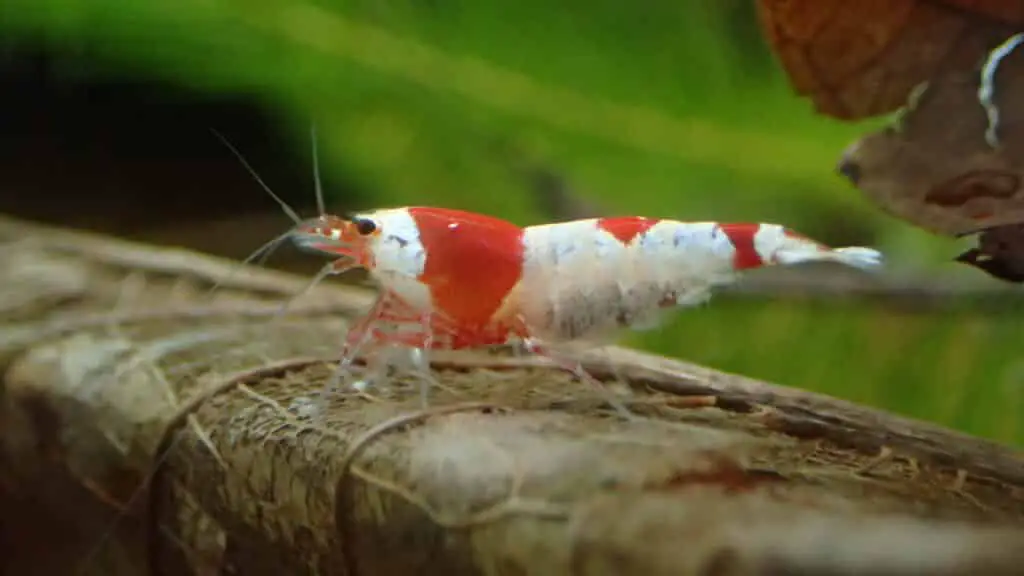
Water Conditioning and Treatment for Shrimp Tanks
Proper water conditioning and treatment are crucial for maintaining a healthy shrimp tank, as they help create a stable and safe environment for your crystal red shrimp. Here are some essential steps and considerations for conditioning and treating water in shrimp tanks:
- Dechlorination: Tap water often contains chlorine or chloramines, which can be harmful to aquatic life. Use a water conditioner specifically designed for aquariums to neutralize these chemicals before adding tap water to your tank.
- Cycle the Aquarium: Before introducing shrimp, ensure your tank has undergone a nitrogen cycle to establish a healthy and stable environment
 . The nitrogen cycle involves cultivating beneficial bacteria that convert toxic ammonia and nitrite into less harmful nitrate. This process usually takes 4-6 weeks.
. The nitrogen cycle involves cultivating beneficial bacteria that convert toxic ammonia and nitrite into less harmful nitrate. This process usually takes 4-6 weeks. - Regular Water Changes: Performing regular water changes helps maintain water quality and stabilize water parameters. Replace 10-20% of the tank water with fresh, treated water weekly or biweekly. Be cautious not to change too much water at once, as it can stress the shrimp.
- Test Water Parameters: Consistently monitor water parameters, including pH, hardness, temperature, ammonia, nitrite, and nitrate levels. Regular testing helps identify any issues early and allows for prompt adjustments to maintain a healthy environment.
- Use Shrimp-Safe Products: When choosing water conditioners, medications, or other treatments, ensure they are safe for shrimp. Some products contain copper or other harmful substances, which can be toxic to shrimp. Always read labels and follow manufacturer instructions.
- Proper Filtration: Install an appropriate filter to maintain water quality and remove harmful substances. Sponge filters are a popular choice for shrimp tanks, as they provide gentle water flow and do not pose a risk to baby shrimp.
- Temperature Control: Use an aquarium heater to maintain a stable temperature within the ideal range for crystal red shrimp (68-76°F or 20-24°C). Constant temperature fluctuations can stress shrimp and lead to health issues.
By following these water conditioning and treatment guidelines, you can create a safe and stable environment for your crystal red shrimp, promoting their health, growth, and breeding success.
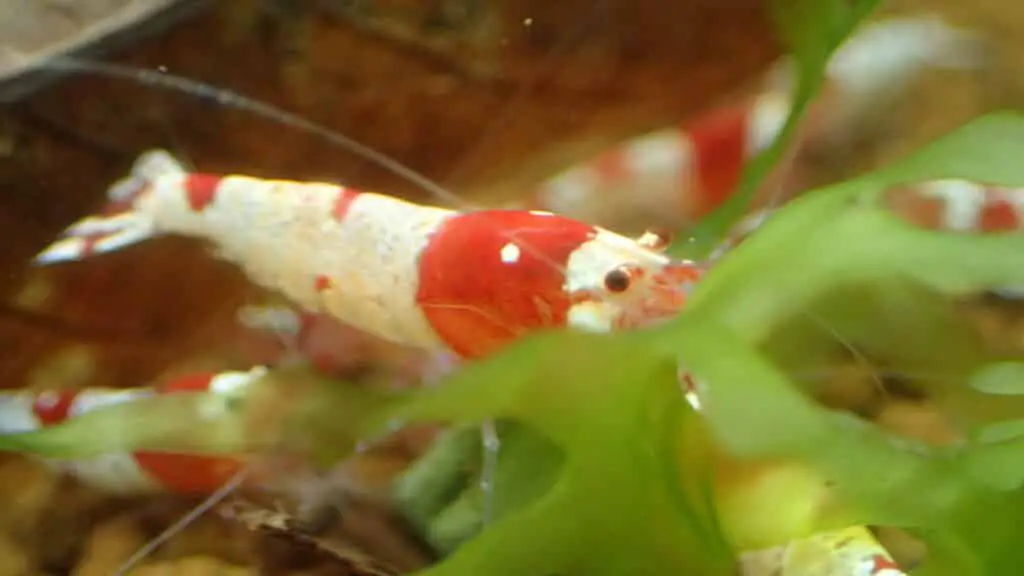
Importance of Regular Water Testing
Regular water testing is crucial for maintaining a healthy and thriving environment in your aquarium, particularly for delicate species like crystal red shrimp. Monitoring water parameters allows you to detect imbalances and take corrective actions promptly, ensuring the well-being of your shrimp. Here are some reasons why regular water testing is essential:
- Early Detection of Issues: Regular testing helps identify any changes in water parameters, such as pH fluctuations, increased ammonia or nitrite levels, or shifts in water hardness. Detecting these issues early allows for timely intervention, preventing potential harm to your shrimp.
- Shrimp Health: Crystal red shrimp are sensitive to water conditions, and imbalances can lead to stress, disease, or even death. Consistent water testing helps maintain optimal conditions for shrimp health, growth, and breeding.
- Stable Environment: Regular water testing enables you to maintain a stable environment, which is essential for crystal red shrimp. Sudden changes in water parameters can stress the shrimp, leading to health complications.
- Breeding Success: Optimal water conditions promote successful breeding in crystal red shrimp. Regular testing ensures that the necessary parameters, such as pH, hardness, and temperature, are within the ideal ranges for shrimp reproduction.
- Monitoring Treatment Effectiveness: If you treat your aquarium for disease, algae, or other issues, water testing helps you monitor the effectiveness of the treatment and ensures that it does not negatively impact the water parameters.
- Guiding Maintenance Practices: Regular water testing provides insights into the effectiveness of your aquarium maintenance practices, such as water changes, filtration, and use of conditioners. This information helps you make informed decisions and adjustments to your maintenance routine.
To conduct water testing, you can use test strips or liquid test kits, with the latter offering more accurate results. Aim to test your water at least once a week, and more frequently if you notice any issues or have recently made changes to your aquarium. By consistently monitoring water parameters, you can ensure a healthy and thriving environment for your crystal red shrimp.

Setting Up a Suitable Habitat for Crystal Red Shrimp
Creating a suitable habitat for crystal red shrimp is crucial for their health, well-being, and breeding success. Here are some essential elements to consider when setting up a shrimp-friendly environment:
- Aquarium Size: A minimum tank size of 5 gallons (19 liters) is recommended for keeping crystal red shrimp. However, larger tanks provide more stable water conditions and can accommodate a larger shrimp population.
- Substrate: Choose a substrate that supports the growth of beneficial bacteria and helps maintain stable water parameters. Dark-colored substrates, such as black or brown, can enhance the vibrant colors of crystal red shrimp. Using shrimp-specific substrates can help maintain a slightly acidic pH, which is ideal for these shrimp.
- Filtration: Select a gentle filter that won’t harm the shrimp, especially the babies. Sponge filters are a popular choice for shrimp tanks, as they provide biological filtration, gentle water flow, and a safe environment for shrimp of all sizes.
- Plants and Decorations: Incorporate live plants and decorations to provide hiding spots, grazing surfaces, and breeding areas for your shrimp. Plants like Java moss, Anubias, and Java fern are suitable options, as they can tolerate a range of water conditions. Driftwood and cholla wood can also serve as hiding spots and release tannins that help maintain optimal water parameters.
- Heater: Use an aquarium
 heater to maintain a stable temperature within the ideal range of 68-76°F (20-24°C). Constant temperature fluctuations can stress shrimp and lead to health issues.
heater to maintain a stable temperature within the ideal range of 68-76°F (20-24°C). Constant temperature fluctuations can stress shrimp and lead to health issues. - Lighting: While crystal red shrimp do not have specific lighting requirements, proper lighting is essential for plant growth and overall aesthetics. A moderate light intensity will suffice for most plants while not encouraging excessive algae growth.
- Water Parameters: As discussed earlier, maintaining optimal water parameters is crucial for the health and breeding success of crystal red shrimp. Regularly test and adjust water conditions to ensure a stable and healthy environment.
- Tank Mates: Crystal red shrimp are peaceful and can be housed with other small, non-aggressive fish or invertebrates. Suitable tank mates include small tetras, rasboras, snails, and other dwarf shrimp
 species. Avoid aggressive or predatory fish that may harm your shrimp.
species. Avoid aggressive or predatory fish that may harm your shrimp.
By setting up a suitable habitat for crystal red shrimps, you can provide a thriving environment that promotes their health, growth, and breeding success, while also creating an attractive and fascinating display in your home.

Managing Temperature and Water Quality
Proper management of temperature and water quality is essential for maintaining a healthy aquarium environment, particularly for sensitive species like crystal red shrimp. Here are some tips to help you manage temperature and water quality effectively:
- Temperature Control: Use a reliable and accurate aquarium heater to maintain a stable temperature within the ideal range of 68-76°F (20-24°C) for crystal red shrimp. Check the heater regularly to ensure it is functioning correctly. Place a thermometer in the tank to monitor temperature, and adjust the heater settings as needed.
- Preventing Temperature Fluctuations: Place your aquarium away from direct sunlight, air conditioning vents, and heating sources to prevent sudden temperature fluctuations. Maintain a consistent room temperature, and consider using a tank cover or lid to help insulate the aquarium.
- Water Changes: Perform regular water changes, replacing 10-20% of the tank water with fresh, treated water weekly or biweekly. Water changes help maintain stable water parameters, remove waste, and replenish essential minerals for shrimp health.
- Filtration: Use an appropriate filter, such as a sponge filter, to remove harmful substances and maintain water quality. Clean the filter media regularly to prevent the accumulation of debris, but be cautious not to remove too much beneficial bacteria.
- Test Water Parameters: Regularly test water parameters, including pH, hardness, temperature, ammonia, nitrite, and nitrate levels. Monitoring these parameters allows you to make necessary adjustments and maintain a stable environment for your shrimp.
- Addressing Water Quality Issues: If you identify issues with water quality, take prompt action to rectify the problem. This may involve adjusting the pH, hardness, or temperature, increasing water changes, or treating the water with conditioners or medications.
- Maintaining a Clean Environment: Remove uneaten food, dead plant matter, and debris from the tank regularly to prevent the buildup of harmful substances. Use a gravel vacuum to clean the substrate during water changes.
- Avoid Overcrowding: Overcrowding can lead to deteriorating water quality and increased stress on your shrimp. Ensure you have adequate tank space and maintain a reasonable shrimp population to prevent overcrowding.
By managing temperature and water quality effectively, you can create a healthy and stable environment for your crystal red shrimp, promoting their well-being, growth, and breeding success.
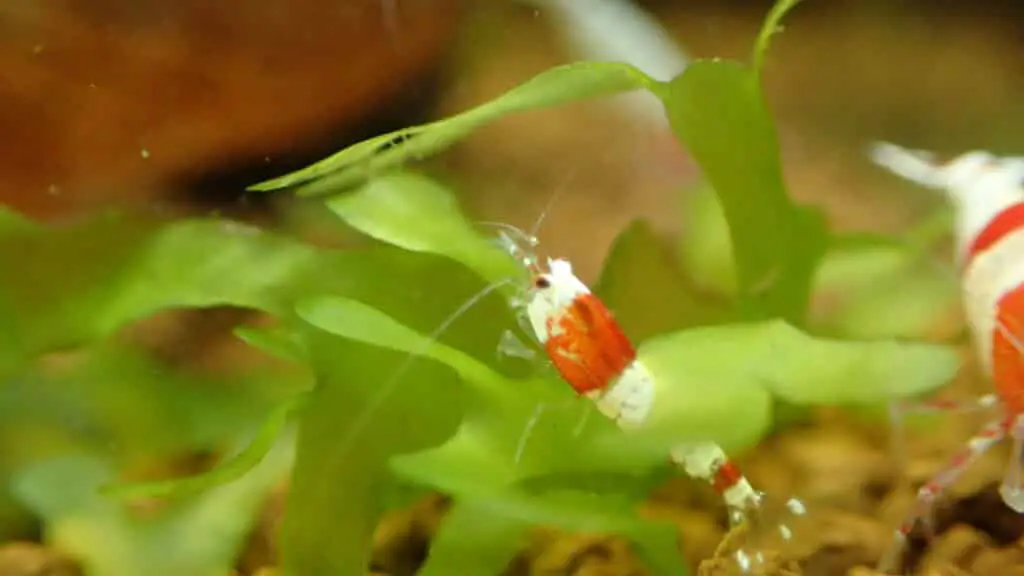
Breeding Crystal Red Shrimp: Optimal Conditions and Tips
Breeding crystal red shrimp can be a rewarding experience, as it enables you to observe their fascinating life cycle and potentially develop new color patterns and grades. To maximize breeding success, follow these tips and ensure you provide optimal conditions:
- Maintain Ideal Water Parameters: Keep the water parameters within the optimal range for crystal red shrimp.
- Provide a Nutritious Diet: Feed your shrimp
 a high-quality, varied diet, including specialized shrimp pellets, blanched vegetables, and high-protein foods such as frozen or live daphnia or brine shrimp. Proper nutrition supports the shrimp’s health, growth, and reproductive capabilities.
a high-quality, varied diet, including specialized shrimp pellets, blanched vegetables, and high-protein foods such as frozen or live daphnia or brine shrimp. Proper nutrition supports the shrimp’s health, growth, and reproductive capabilities. - Create Hiding Spaces: Provide ample hiding spots using plants, driftwood, cholla wood, or ceramic shrimp caves. These hiding spaces help shrimp feel secure, encourage breeding behavior, and provide protection for baby shrimp.
- Ensure Gentle Water Flow: Equip your tank with a gentle filter, such as a sponge filter
 , to provide a safe environment for baby shrimp and prevent them from being sucked into the filter.
, to provide a safe environment for baby shrimp and prevent them from being sucked into the filter. - Separate Breeding Tank (Optional): If you want to maximize breeding success and monitor the process closely, you can set up a separate breeding tank for your crystal red shrimp
 . This tank should have the same water parameters as the main tank and provide ample hiding spaces for the shrimp.
. This tank should have the same water parameters as the main tank and provide ample hiding spaces for the shrimp. - Watch for Signs of Breeding: Female crystal red shrimp carrying eggs under their abdomens, also known as “berried” shrimp, are a sign of successful breeding. The eggs usually hatch within 3-4 weeks, and the baby shrimp, or shrimplets, will molt and grow rapidly in the early stages of their development.
- Protect Baby Shrimp: Keep tank mates to a minimum or choose only peaceful, non-predatory species to prevent baby shrimp from being eaten. Provide sufficient hiding spaces and maintain optimal water conditions to promote the survival of shrimplets.
- Monitor Growth and Separate Shrimplets (Optional): If you want to selectively breed for specific color patterns or grades, you can monitor the growth of the baby shrimp and separate them based on your preferences. This process requires close observation and a dedicated tank for selective breeding.
By providing optimal conditions and following these tips, you can increase the chances of successful breeding and enjoy the fascinating process of raising crystal red shrimp in your home aquarium.
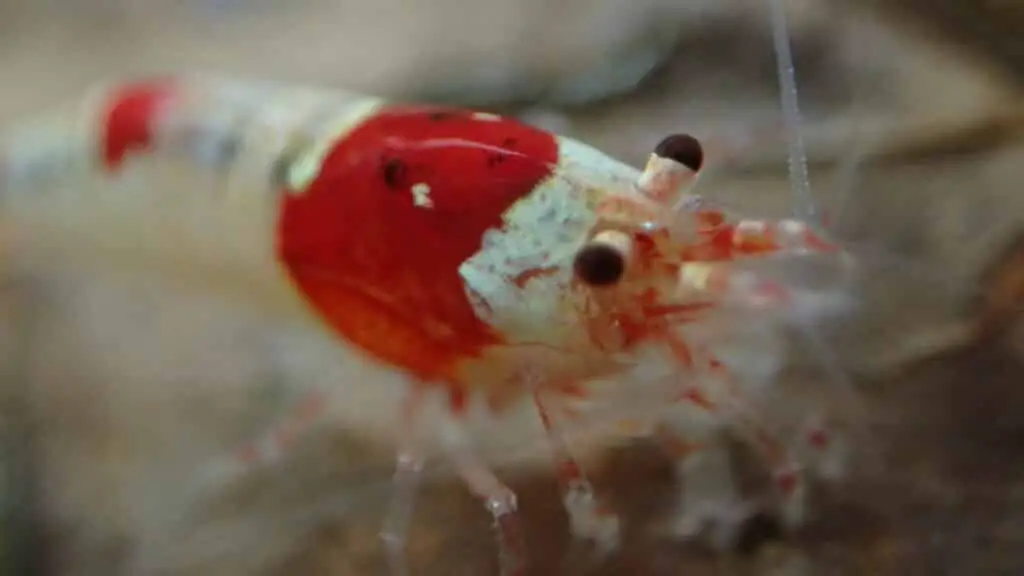
Conclusion
Keeping and breeding crystal red shrimp can be an incredibly rewarding and enjoyable experience for both novice and experienced aquarists. By understanding their specific requirements and maintaining optimal water conditions, you can create a thriving environment that promotes their health, growth, and breeding success. Regular water testing, proper temperature management, and appropriate habitat setup are key to ensuring the well-being of these delicate and stunning creatures. With careful attention to their needs, you can enjoy the beauty and fascinating behaviors of crystal red shrimp in your home aquarium for years to come.
Frequently Asked Questions (FAQ)
Q: What is the ideal water temperature for crystal red shrimp?
A: The ideal water temperature for crystal red shrimp is between 68-76°F (20-24°C). Maintaining a stable temperature within this range is crucial for their health and breeding success.
Q: Can crystal red shrimp live in hard water?
A: Crystal red shrimp prefer soft water, with a hardness between 1-4 dGH (17.9-71.6 ppm). Hard water can stress them and may lead to health issues or reduced breeding success.
Q: What do crystal red shrimp eat?
A: Crystal red shrimp are omnivorous scavengers and can consume a variety of foods, including specialized shrimp pellets, blanched vegetables, algae, and high-protein options like frozen or live daphnia or brine shrimp.
or brine shrimp.
Q: How often should I change the water in my crystal red shrimp tank?
A: It’s recommended to change 10-20% of the tank water weekly or biweekly to maintain stable water parameters and water quality.
Q: Can crystal red shrimp be kept with fish?
A: Crystal red shrimp can be kept with small, non-aggressive fish species, such as small tetras and rasboras. However, avoid aggressive or predatory fish that may harm your shrimp.
Q: How can I encourage breeding in my crystal red shrimp?
A: To promote breeding, maintain optimal water conditions, provide a nutritious diet, and create hiding spaces using plants and decorations. Also, ensure a gentle water flow to provide a safe environment for baby shrimp.
Q: How long does it take for crystal red shrimp eggs to hatch?
A: Crystal red shrimp eggs typically hatch within 3-4 weeks. After hatching, the baby shrimp, or shrimplets, will molt and grow rapidly during the early stages of their development.
typically hatch within 3-4 weeks. After hatching, the baby shrimp, or shrimplets, will molt and grow rapidly during the early stages of their development.
